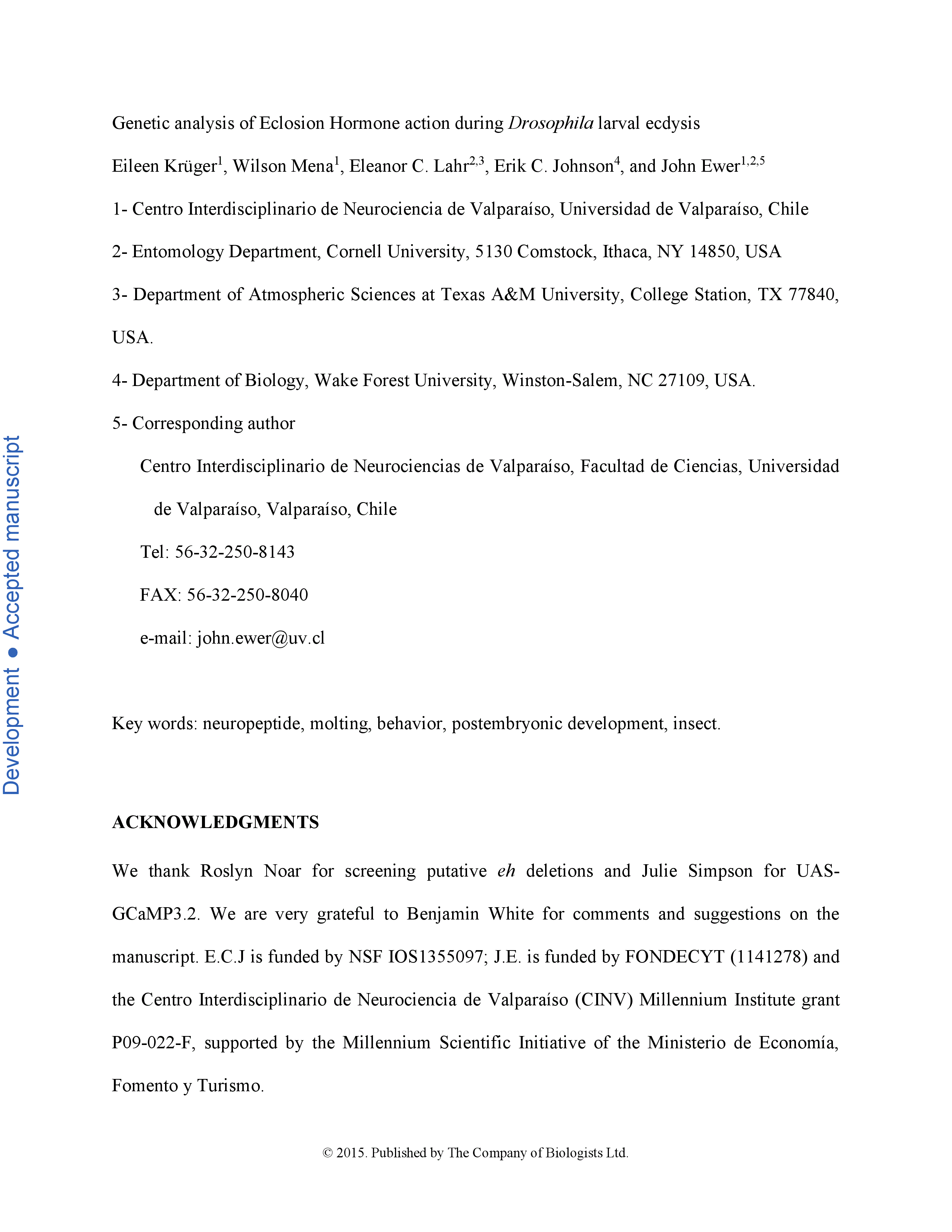Insect growth is punctuated by molts, during which the animal produces a new exoskeleton. The molt culminates with ecdysis, an ordered sequence of behaviors that causes the old cuticle to be shed. This sequence is activated by Ecdysis Triggering Hormone (ETH), which acts on the CNS to activate neurons that produce neuropeptides implicated in ecdysis, including Eclosion hormone (EH), Crustacean Cardioactive Peptide (CCAP), and bursicon. Despite over 40 years of research on ecdysis, our understanding of the precise roles of these neurohormones remains rudimentary. Of particular interest is EH, whose role beyond the well-accepted action of massively upregulating ETH release has remained elusive. We report on the isolation of an eh null mutant in Drosophila, and use it to investigate the role of EH in larval ecdysis. We found that null mutant animals invariably died at around the time of ecdysis, revealing an essential role in its control. Unexpectedly, however, they failed to express the preparatory behavior of pre-ecdysis while directly expressing the motor program of ecdysis. In addition, although ETH release could not be detected in these animals, the lack of pre-ecdysis could not be rescued by injections of ETH, suggesting that EH is required within the CNS for ETH to trigger the normal ecdysial sequence. Using a genetically-encoded calcium probe we show that EH configures the response of the CNS to ETH. These findings show that EH plays an essential role in the Drosophila CNS in the control of ecdysis, in addition to its known role in the periphery of triggering ETH release.
Genetic analysis of Eclosion hormone action during Drosophila larval ecdysis
Currently Viewing Accepted Manuscript - Newer Version Available
- Split-screen
- Views Icon Views
- Open the PDF for in another window
-
Article Versions Icon
Versions
- Version of Record 15 December 2015
- Accepted Manuscript 01 January 2015
- Share Icon Share
-
Tools Icon
Tools
- Search Site
Eileen Krüger, Wilson Mena, Eleanor C. Lahr, Erik C. Johnson, John Ewer; Genetic analysis of Eclosion hormone action during Drosophila larval ecdysis. Development 2015; dev.126995. doi: https://doi.org/10.1242/dev.126995
Download citation file:
Advertisement
Call for papers: Uncovering Developmental Diversity

Development invites you to submit your latest research to our upcoming special issue: Uncovering Developmental Diversity. This issue will be coordinated by our academic Editor Cassandra Extavour (Harvard University, USA) alongside two Guest Editors: Liam Dolan (Gregor Mendel Institute of Molecular Plant Biology, Austria) and Karen Sears (University of California Los Angeles, USA).
Choose Development in 2024

In this Editorial, Development Editor-in-Chief James Briscoe and Executive Editor Katherine Brown explain how you support your community by publishing in Development and how the journal champions serious science, community connections and progressive publishing.
Journal Meeting: From Stem Cells to Human Development

Register now for the 2024 Development Journal Meeting From Stem Cells to Human Development. Early-bird registration deadline: 3 May. Abstract submission deadline: 21 June.
Pluripotency of a founding field: rebranding developmental biology

This collaborative Perspective, the result of a workshop held in 2023, proposes a set of community actions to increase the visibility of the developmental biology field. The authors make recommendations for new funding streams, frameworks for collaborations and mechanisms by which members of the community can promote themselves and their research.
Read & Publish Open Access publishing: what authors say

We have had great feedback from authors who have benefitted from our Read & Publish agreement with their institution and have been able to publish Open Access with us without paying an APC. Read what they had to say.



